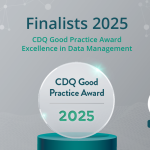SAP Master Data Integration

With SAP Master Data Governance (MDG) in place, your goal is to ensure that the data is accurate and consistent across the entire organization. Reliable information about customers, products, employees, suppliers, and more, are crucial to make the most of SAP environment and bring the expected business results.
With SAP MDG October release, access to high-quality business partner data, compatible with SAP’s data model is easier and more seamless than ever. The DPI (data provider integration) feature from Central Governance serves as the gateway for incorporating CDQ’s services into SAP MDG. It is accessible in both the SAP MDG, cloud edition, and in the cloud-ready mode of SAP MDG on S/4HANA.
For customers, this translates to CDQ integration being readily available across various platforms, including SAP Business Suite, S/4HANA on-premise, and both private and public cloud deployments through SAP MDG, cloud edition. Additionally, it is accessible for those using SAP MDG on S/4HANA, also known as SAP MDG on-premise.
This is a true CDQ & SAP MDG integration available for all of you!
Feature Highlights
Let’s now look at some feature highlights. Essentially, it is about the creation of new business partner data and the maintenance of existing business partner data records. SAP MDG serves here as an entry gate for new data in terms of first time right and for an integrated view on existing respond data records for quality assurance. Unless stated otherwise, the examples begin with Manage Business Partners app.
Highlight 1: Access to 70 trusted data sources in parallel
This is the basic feature of CDQ integration in SAP MDG. The lookup allows access to CDQ’s data pool, which contains high-quality business partner data from various trusted data sources. When you make a single lookup request, it searches up to 70 external data sources simultaneously and presents the best matches in a uniform format. You can then make your choice, using additional criteria that were not included in the original request but are evident in the matches, or using your personal evaluation of a specific data source. The example below searches for CDQ in Germany.

The following figure shows the search result for CDQ in Germany with five found reference records. Under the company name of each item, the prefix of the record ID indicates the data source for the corresponding record. For instance, DE.RC stands for the German Register of Commerce, DNB represents Dun and Bradstreet, BVD denotes Bureau von Dijk, and AT.FON refers to Austrian FinanzOnline. The first item is marked with GR, Golden Record, a consolidated version of the data from all other records using a prioritization logic.
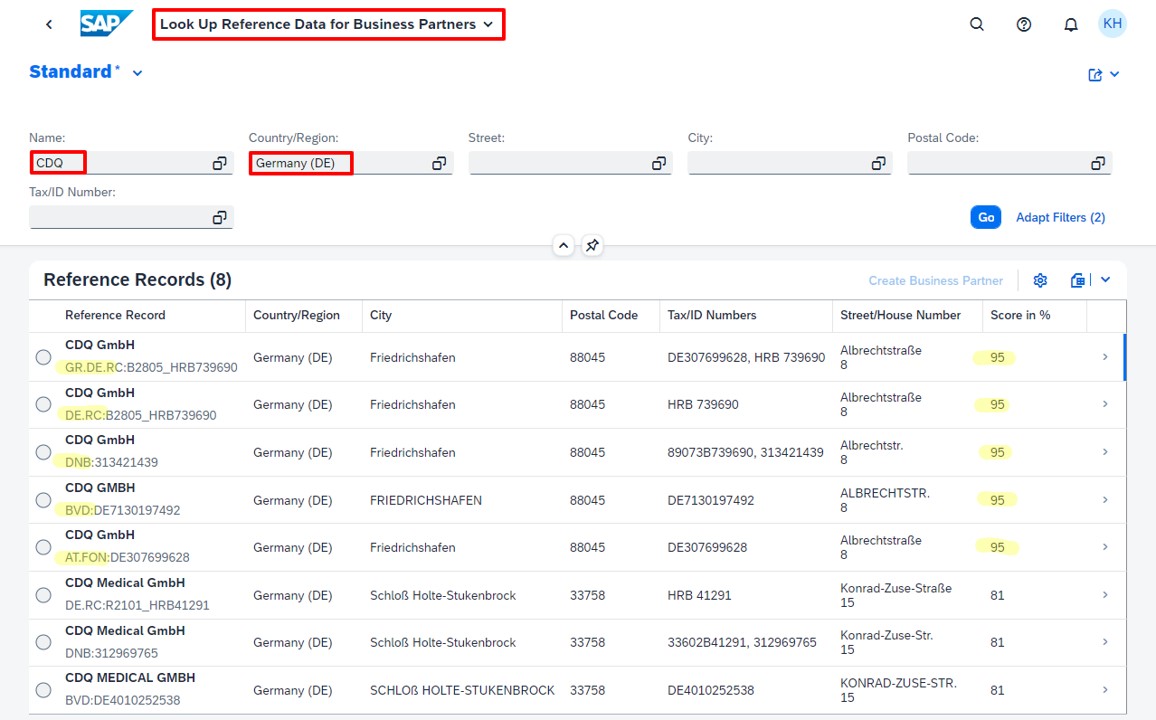
Highlight 2: Integrated view on business identifiers from various sources
In SAP’s One Domain Model (ODM), which is the conceptual basis for the data model used in SAP MDG, cloud edition, and the cloud-ready mode of SAP MDG on S/4HANA, there are two key types of identifiers for business partners: Identifications and Tax Numbers. Both are vital components of various business processes, requiring precise semantic mapping to external data. While SAP MDG allows for customized code lists, we strongly recommend sticking to default settings, especially for tax numbers due to their deep integration in tax-related processes.
A significant benefit of using CDQ’s trusted data into SAP master data integration is that it offers business partner records that are already mapped to SAP ODM. This includes both identification types and tax number types. For example, if you find a matching business partner with a value-added tax (VAT) number in an external data source, this information will be automatically mapped to the corresponding SAP tax number type code.
In the example of CDQ in Germany, the ID of the German Register of Commerce is mapped to BUP002, which is the SAP identification type for business register numbers. And additional information such as the responsible institution is mapped to the corresponding SAP ODM field.

Highlight 3: Golden Record
As the search result for CDQ in Germany shows, multiple relevant reference records for a particular business partner may appear across various data sources. The Golden Record feature addresses this issue by consolidating information from multiple sources into one consistent record, with a prioritization of data sources that is customizable and country-specific. As shown in the figure below, the European VAT number is included with information from the German Register of Commerce and mapped to the SAP tax category DE0. And the region is added with code BW according to the SAP standard code list.
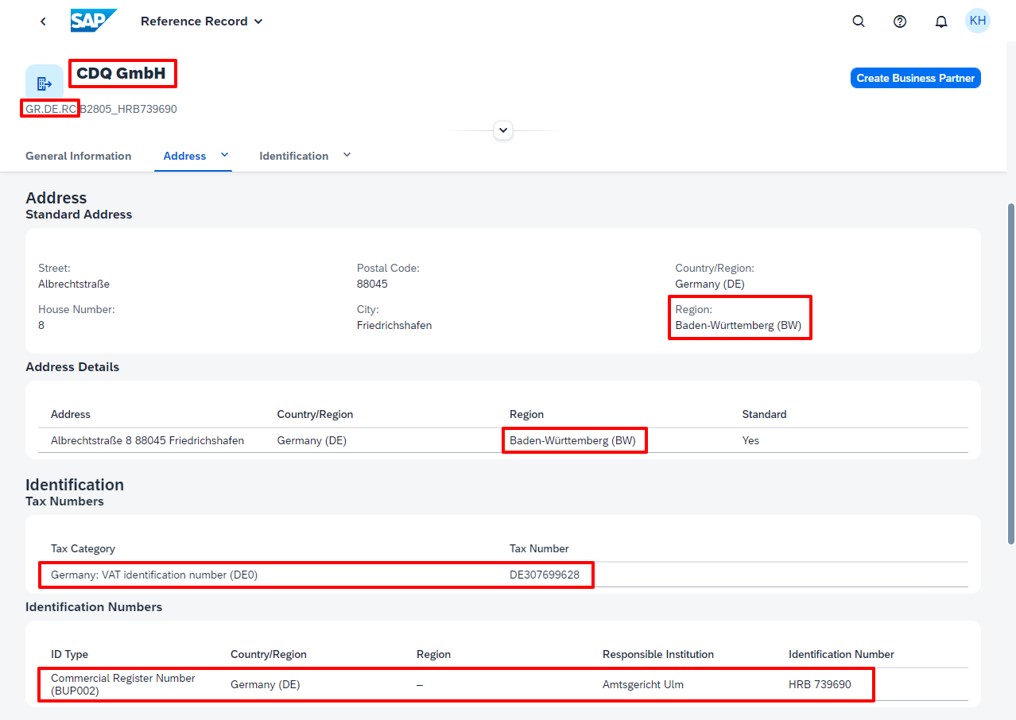
Integrated data sources are not limited to German or European authorities but include a variety of sources from around the world. For example, the Legal Entity Identifier (LEI) in the following example is just one of many IDs that can be accessed. Trusted data sources from various US state registers, Brazil, Australia, and other countries are also available.
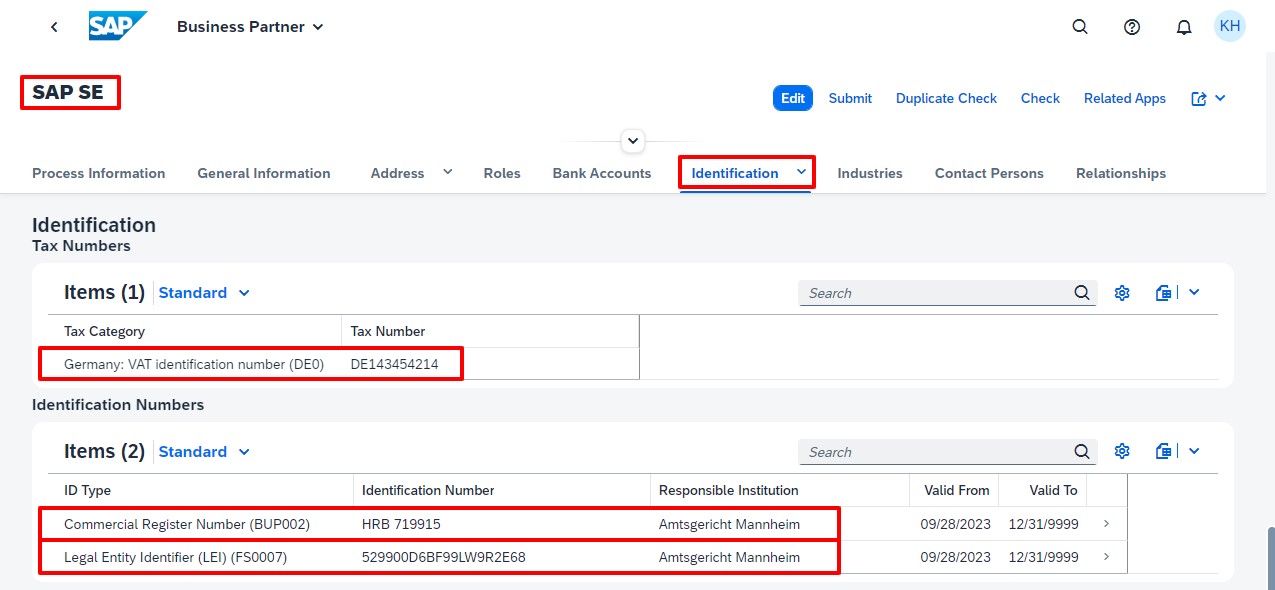
Highlight 4: Uniform categorization of legal forms
Understanding a business partner’s legal form is crucial for global risk management. Legal forms are defined differently in various countries, adding complexity to this matter. Some data sources offer structured information on legal forms, while others include it informally as part of the name, and some do not offer this information at all. SAP ODM addresses this by providing a legal form attribute within a business partner’s organizational details. However, this attribute has limitations such as a two-character code and various namespace restrictions.
To tackle these challenges, we at CDQ have defined about 90 legal form categories. These categories link to the various legal forms and their abbreviations across countries.
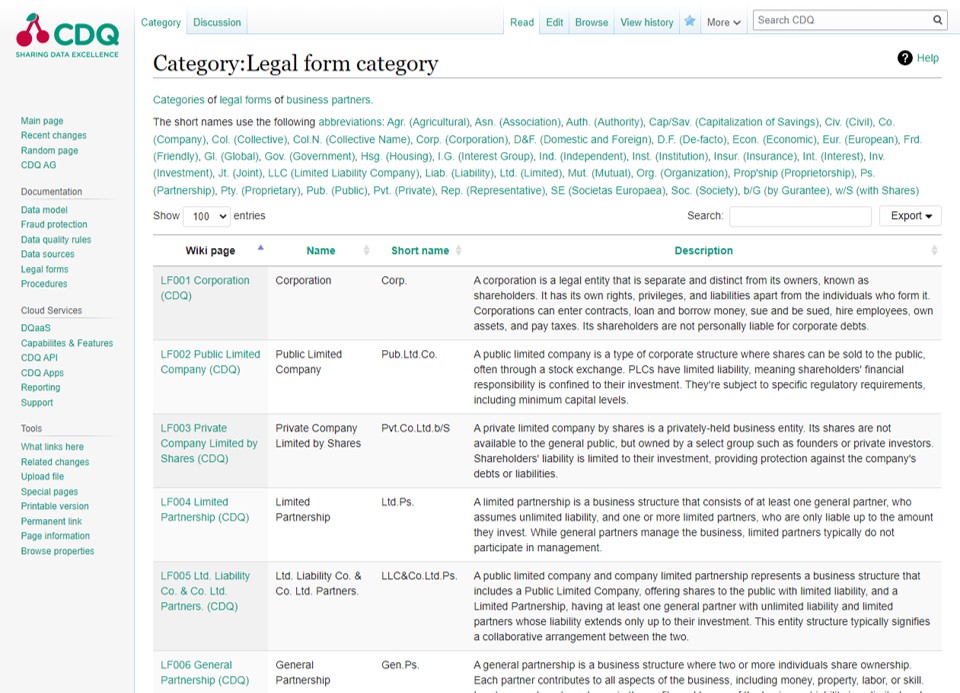
See the full list: https://meta.cdq.com/Category:Legal_form_category
In SAP MDG, the system allows only a two-digit code and a unified abbreviation for the legal form category. However, even with these limitations, you gain a standardized view of your business partners’ legal forms on a global scale.
See the Golden Record for CDQ in Switzerland: The legal form is displayed as Pub.Ltd.Co., with an associated SAP code of 02. This code universally represents public limited companies, capturing both Aktiengesellschaft and Société Anonyme in Switzerland, as well as PLC in Great Britain.

In the Create Business Partner process, a value help dialog for legal forms becomes accessible, displaying all the legal forms defined by CDQ.
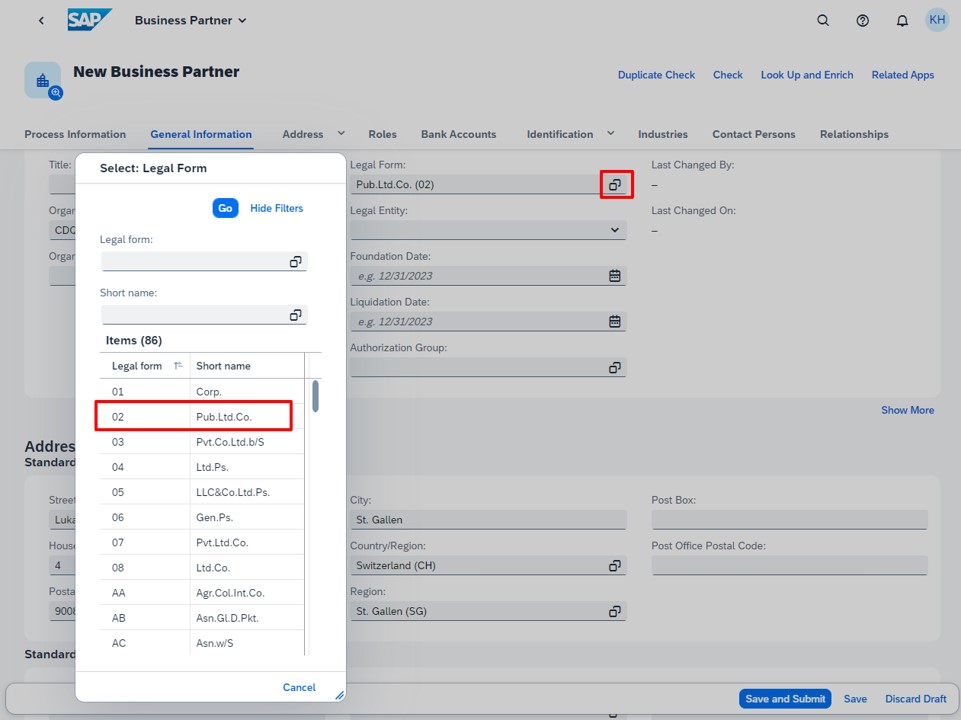
The following examples show Golden Records for CDQ in Germany and Poland. You see that the German legal form AG and the Polish legal form SP Z O O both fall under the same legal form category Pvt.Limited.Co. (private limited companies), represented by the SAP code 07. The uniform categorization simplifies the process of understanding and comparing business partners across different countries.

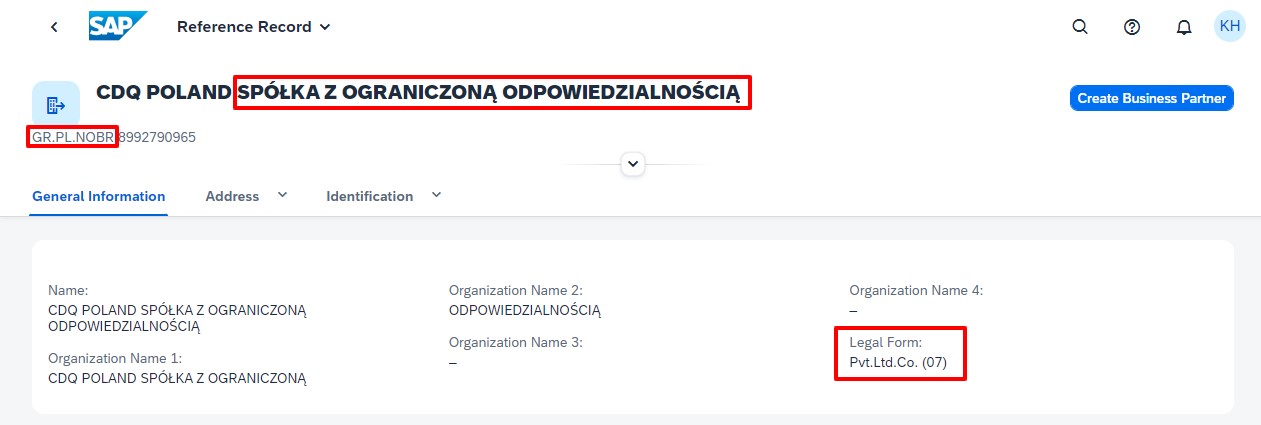
The power of this integration lies in its ability to seamlessly connect various data formats from multiple trusted sources: CDQ simplifies the data, and SAP MDG effortlessly incorporates this refined information into your systems. The result? Streamlined workflows for creating new business partners and ensured top-notch data quality.
Getting started with an evaluation of CDQ and SAP MDG is a breeze. In just a few minutes, you can immerse yourself in the world of operational efficiencies and pinpoint data accuracy.
Frequently asked questions
What is SAP Master Data Integration?
SAP Master Data Integration is the seamless integration of master data from diverse sources into SAP systems. It guarantees that crucial data like customer, product, and vendor information remains uniform, precise, and current throughout the organization's SAP environment. This integration optimizes business operations, improves data integrity, and facilitates informed decision-making.
What is SAP Master Data Governance (SAP MDG)?
SAP Master Data Governance (SAP MDG) is a comprehensive solution designed to ensure the integrity, consistency, and accuracy of master data across an organization's SAP landscape. It provides a framework and set of tools for managing master data creation, maintenance, and distribution processes in a centralized and controlled manner.
What are the benefits of SAP MDG?
SAP MDG enables businesses to establish and enforce data governance policies, streamline master data workflows, and maintain a single source of truth for critical data records such as customers, suppliers, and mores. By harmonizing master data management processes, SAP MDG helps organizations improve data quality, increase operational efficiency, and support strategic decision-making initiatives.
What are the main modules of SAP Master Data Governance?
SAP Master Data Governance (SAP MDG) streamlines and enhances the management of master data across the organization through several key capabilities:
- Consolidation: Integrate and synchronize data from SAP and non-SAP sources to create a single source of truth. This capability includes defining data models and ensuring consistent data distribution across systems.
- Central Governance: Allow teams to manage specific attributes of master data, ensuring compliance through validated values and controlled data maintenance processes, including role-based approval workflows.
- Data Quality and Process Analytics: Enhance the accuracy and completeness of master data with robust validation and enrichment processes. This feature supports ongoing quality checks and performance analytics to drive continuous improvement.
For which companies is SAP MDG a suitable solution?
SAP Master Data Governance (SAP MDG) is suitable for companies of all sizes and industries facing challenges in managing master data quality. It's particularly beneficial for large enterprises with complex processes, regulated industries, global companies with diverse IT landscapes, and those undergoing digital transformation. By centralizing governance, standardizing data, and streamlining workflows, SAP MDG helps ensure compliance, improve data quality, and support business growth.
How can you ensure your data quality and what role does SAP MDG play in this?
SAP Master Data Governance (SAP MDG) ensures data quality by centralizing governance, standardizing, and validating data, managing workflows, enabling data enrichment, and providing monitoring and reporting capabilities. This comprehensive approach helps businesses maintain accurate and consistent master data, supporting informed decision-making and operational efficiency.

Experience these features yourself without any financial commitment by giving free tier a try: https://blogs.sap.com/2023/10/10/hands-on-with-free-tiers-cdq-trusted-business-partner-data-in-sap-master-data-governance/
Get our e-mail!
Related blogs
How Henkel is turning master data quality into a service
Every now and then, you come across a project that makes you stop and think: “Now that’s how it should be done!” That’s exactly the case with Henkel and their…
Trust, automation, and the future of master data management
Master data management (MDM) is a vital, albeit often underappreciated, foundation of modern business operations. When done right, it ensures smooth processes,…
The value of automation in MDM: podcast CDQ & SAP
Automation isn’t just about efficiency - it’s about enabling growth and innovation. By automating repetitive, error-prone tasks, businesses can free up…



